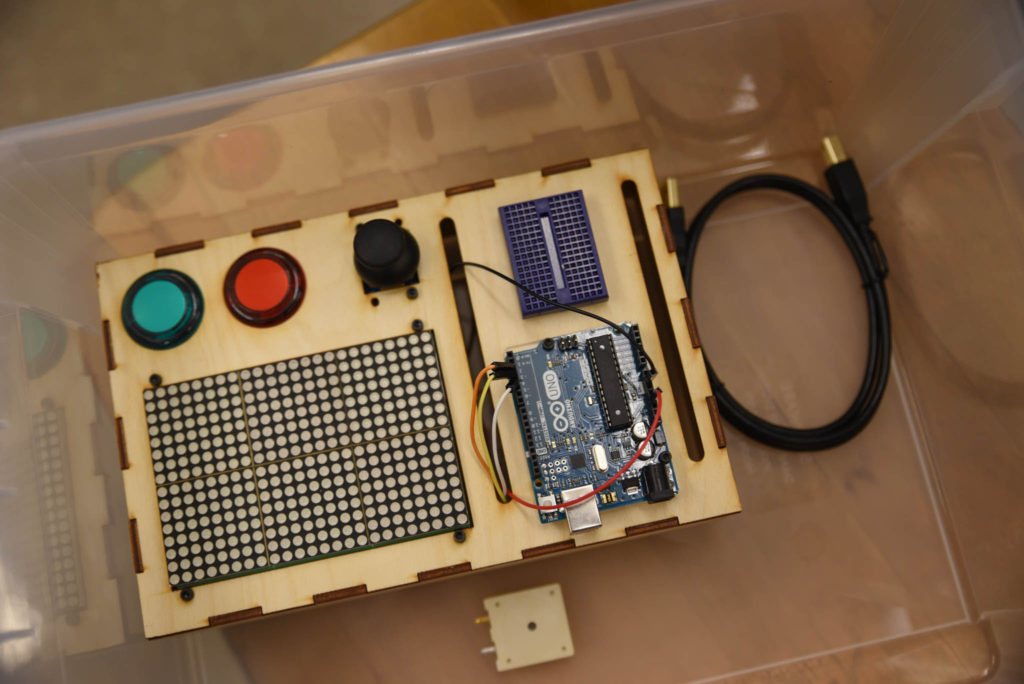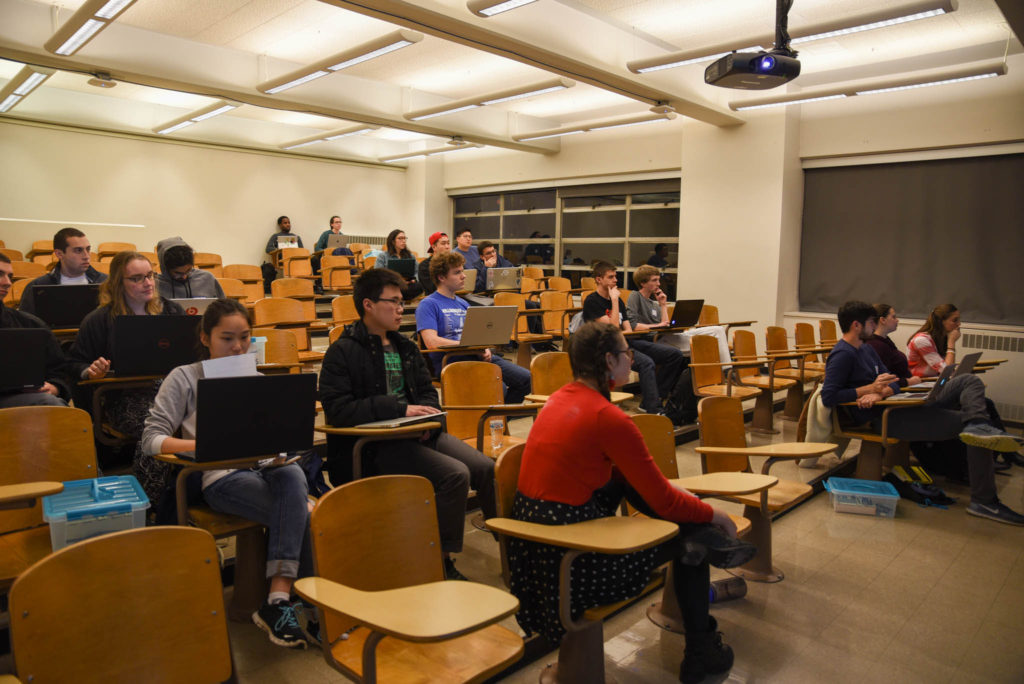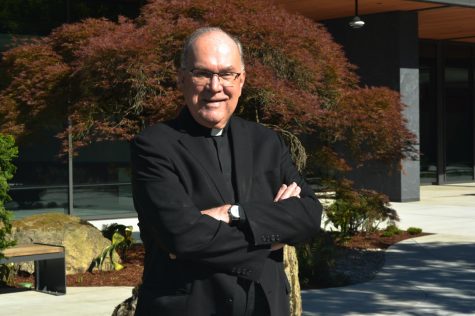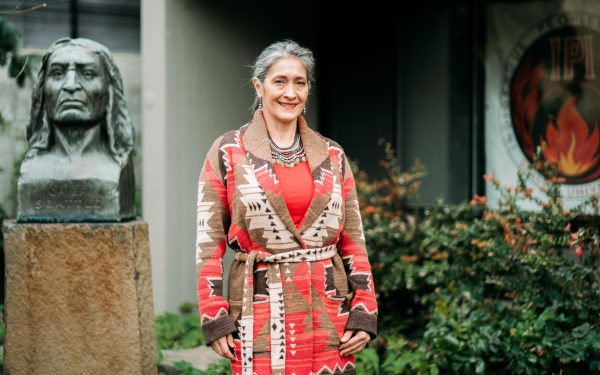Seattle U Coders Compete in Video Game Competition
As women marched in the street for their rights, another group of women gathered on the Seattle University campus to showcase their skills in technology and coding, an industry that has historically been party to a large gender disparity.
The Institute of Electrical and Electronic Engineers (IEEE), in conjunction with the Seattle U Innovation Lab, hosted a 21-hourlong “Hackathon” the evening of Jan. 19, during which student teams of two to three were instructed to write code for an original video game. The code would be run using a small processor board called Arduino, which also had a joystick controller and two buttons.
Junior Electrical Engineering major Mirka Mandich led the event and is Co-President of IEEE, a club on campus that aims to foster technological knowledge and passion in students for the “betterment of humanity.” The Innovation Lab assisted with the Hackathon and is a space for collaborative innovation for Electric Engineering students, led by Innovator in Residence, Rich Bankhead.
A hackathon is a challenge in which a company or large organization has a problem or theme that teams will brainstorm solutions for and present on. The Computer Science department at Seattle U has previously held Hackathons, though those were limited to Computer Science majors. Mandich was interested in reviving the IEEE presence on campus and saw a more general hackathon as a way to integrate multiple disciplines of science into one event.
“We’re hoping that people will work together and work with each other a little bit because some people are good at programming, some are better at the hardware,” Mandich said. “I hope that with this event, we can have a little more crossover between the different elds of engineering and computer science.”
Senior applied math major and electrical engineering minor Tori Hoff was the only participant that wasn’t an electrical engineering or computer science major. She was also one of seven women, making up a third of the 21 participants. She had done a similar project in her engineering Circuits class and was interested in expanding on that.
“I thought it would be a really interesting, different experience,” she said. “It’s mainly just for fun, we just want to hang out and see what we can make.”
The teams’ work was scored on the creativity, complexity and playability of their game, as shown through their presentation. Bankhead stressed the importance of a strong presentation in any field.
“If you can’t sell your idea in three minutes, then it’s going to be a long career right?” he said.
Bankhead gave the teams some quick tips on how to best manage their project, then the teams spread out throughout the building, hunkering down for what was bound to be a long night. They would not be allowed to receive any outside human help, though they could use the internet and other teams if available.
In the morning the teams presented their work, giving three minute presentations that included a demo of the game, with two minutes left for questions from the judges.
The games varied in style and goal, with some structured similarly to established video games but with some modi cations. One game, Trivia Jump, combined two game formats into one: tactile and knowledge based. Another game called Quicksand tested the player on their ability to memorize a maze path. Teams got creative with their modi cations; one team chose to add an additional sensor which would turn on the console by touch.
The last team’s presentation on their game, Overwatch ProTrainer, was incredibly thorough and kept the audience laughing. The purpose of the game was to develop reflexes to perform better in eSports. the team sold their product well, with extensive testimonials included in their presentation.
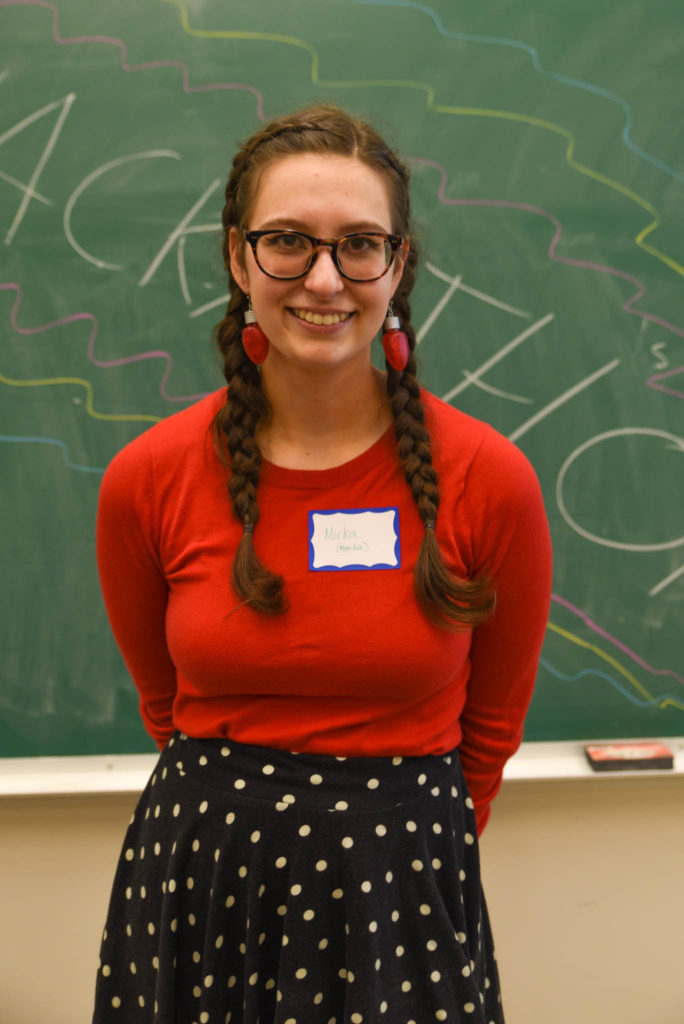
Student organizer, Mirka Mandich, at the opening remarks of the hackathon.
The winners were announced after some deliberation between the judges. Overwatch ProTrainer won third place, Quicksand earned a second place nod, and the first place prize of $100 each went to Senior computer science major Clare Mason and junior electrical engineering major Matthew Horn, makers of Safeway 2: Infinite. Their game had an extensive backstory and was a challenge to guide a child through a randomly generated asteroid field, with the speed of the asteroids increasing with each level.
Mandich intends to continue the Hackathon in the future, noting that she hopes it can promote more connections among the sciences and become a legacy event for the College of Science and Engineering.
“I hope that with this event, we can have a little more crossover between the different fields of engineering and computer science.”
Sofía may be reached at
[email protected]






